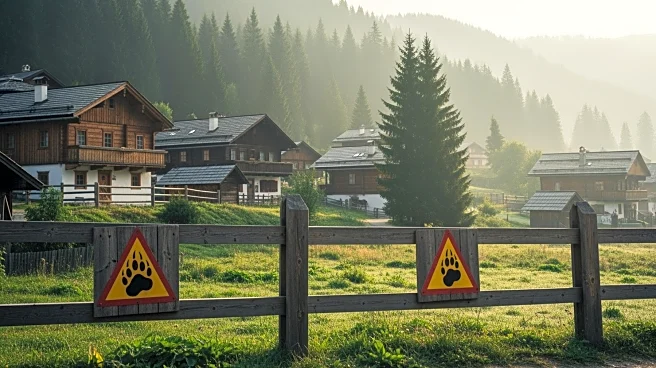What's Happening?
In the Japanese mountain village of Shirakawa, local officials are taking steps to protect residents and tourists from an increasing number of bear attacks. The village, known for its UNESCO-listed thatched-roof
cottages, has seen a surge in bear sightings, with over 100 incidents reported this year compared to 35 last year. The rise in bear encounters is attributed to a growing bear population and a shortage of natural food sources. Authorities have captured several bears using honey-laced traps and have issued warnings to visitors to walk in groups and wear bear bells. The United States, China, and Britain have issued travel advisories regarding bear attacks in Japan, highlighting the risk to tourists.
Why It's Important?
The increase in bear attacks poses a significant threat to tourism in Japan, particularly in areas like Shirakawa that attract international visitors. The situation has prompted travel advisories from major countries, which could impact Japan's tourism industry. The measures taken by local authorities, such as using drones equipped with loudspeakers and firecrackers, reflect the urgency of addressing the issue. The bear population's growth, influenced by climate change and rural depopulation, underscores broader environmental challenges that could affect human-wildlife interactions in the future.
What's Next?
Local authorities in Shirakawa and other affected areas are likely to continue implementing and testing innovative solutions to deter bears, such as the use of drones. The effectiveness of these measures will be closely monitored, and further actions may be taken if bear encounters persist. The situation may also prompt discussions on wildlife management and conservation strategies in Japan, as well as potential collaborations with international experts to address the underlying causes of increased bear activity.
Beyond the Headlines
The rise in bear attacks in Japan highlights the complex relationship between humans and wildlife, exacerbated by environmental changes and human activities. The situation raises ethical questions about wildlife management and the balance between conservation and public safety. It also reflects broader trends in rural depopulation and land use changes, which may have long-term implications for biodiversity and ecosystem health.












